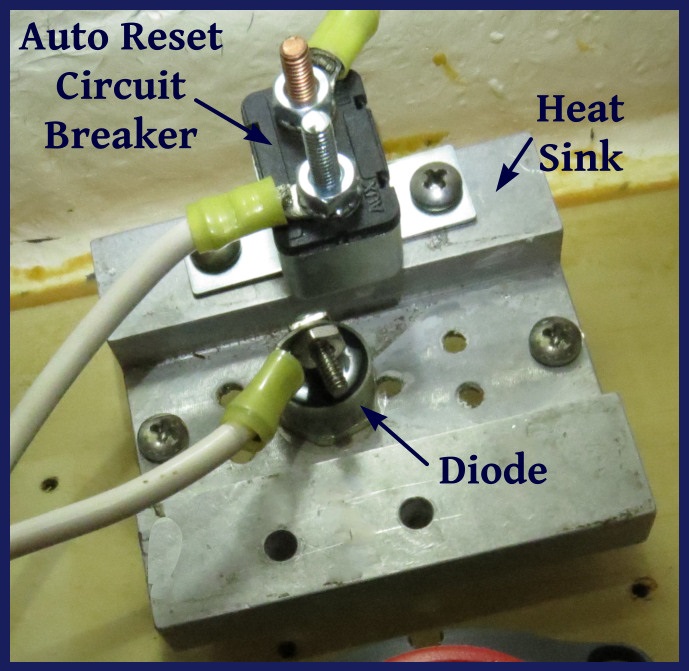The Blue View - Charging Two Battery Banks
/Nine of Cups has the usual two battery banks – one for supplying power to the “house” and one dedicated to the starter battery. It's not easy keeping them both charged. The house batteries consist of four 210 amp-hour (ah) batteries for a total of 840 ah, while the starter circuit consists of a single 210 ah battery. Both have switches so that in an emergency, we can use either or both banks to start the engine or provide power to the house circuits.
When we are on shore power, we have a smart battery charger that monitors both battery banks and charges each as needed. The charger is only a 30 amp charger, so it takes several hours of charging to fully charge the house battery bank, but this isn't normally a problem.
The real challenge is when we are away from shore power – which is most of the time. When we don't have shore power, we rely on solar panels and a wind generator to produce most of our power, and when they aren't enough, we start the engine and use our 200 amp alternator to charge the batteries.
If I were designing the perfect charge controller, first, it would totally isolate each battery bank from the other, and would monitor the battery levels. If the engine was not running, it would direct the charge current from the solar panels and wind gen to whichever bank most needed the charge. In the rare event both battery banks were fully charged, the charge controller would redirect most of the incoming current to the water heater, and provide a trickle charge to both battery banks. If the engine was running, the charge controller would combine all three charge sources to maximize the charging current and provide an intelligent three-stage charge to both banks.
To my knowledge, there is no such charge controller. There are alternator regulators that can charge two battery banks, but they are quite expensive and don't deal with alternative charge sources. Some vessels have two engine-mounted alternators, one for each battery bank, each with its own regulator. This approach has a number of advantages, but it is expensive, adds complexity, and also doesn't handle alternative charge sources. There are battery isolators and battery combiners that help charge two battery banks, but none is ideal, and they're usually large and expensive.
So what do we do? We have our own method of keeping both banks charged. It doesn't come close to the 'perfect' charge controller, but it's inexpensive and works reasonably well. We use a diverter type controller for the solar and wind gen currents. As long as the house batteries need charging, the output from the wind gen and solar panels are fed into the house battery. Once it reaches full charge, the current is diverted into the water heater. This current is not enough to make the water hot, but does warm it a bit, and doesn't waste any energy. The output of the alternator is also fed into the house batteries.
We use a diode and an automatic reset circuit breaker to connect the two battery banks. When there is solar and wind and the house battery bank begins to charge, once the voltage rises to about 0.4 volts above the starter battery voltage, the starter battery is trickle charged to keep it about 0.4 volts below the house batteries. When the sun goes down and/or the wind calms, the house battery voltage drops and the diode prevents the starter battery from discharging. Thus, it is always kept topped up.
When the starter motor begins cranking the engine, a huge load is applied to the starter battery, and its voltage drops to 10.5 volts or less. As the starter battery voltage drops, a large current flows through the diode connecting the two banks, but this quickly trips the circuit breaker, and the circuit is opened. Once the engine stops cranking, the starter battery voltage returns to near normal. After a few minutes, the circuit breaker automatically resets, and a charge current begins flowing from the house batteries to the starter batteries.
The auto reset circuit breaker is rated for 20 amps, eliminating the possibility of charging the starter battery at too high a charge rate – a problem we had with the battery isolator that we had originally. The diode I used is rated for 95 amps continuous, which is overkill for this circuit, but is one I had on hand. A 60 amp diode would be quite adequate for this circuit.
We have used this circuit for a few years now, and it has worked well for us. I plan to continue using it until we find (or I find time to design and build) the ideal charge controller.




